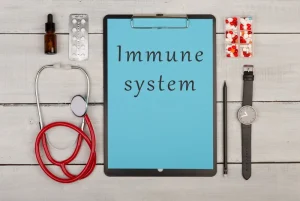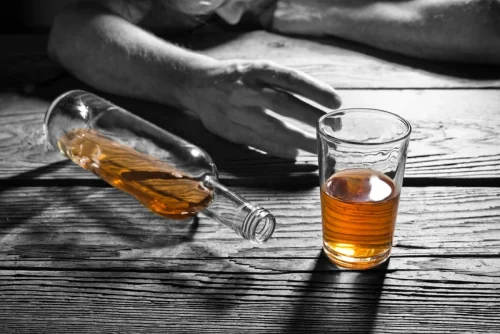Effects of Alcohol on Each Part of the Body
Alcoholism is a term that is sometimes used to describe what is known as an alcohol use disorder (AUD). They’ll do a physical exam and ask you questions about your drinking habits. Alcoholism has been known by a variety of terms, including alcohol abuse and alcohol dependence. Unhealthy alcohol use includes any alcohol use that puts your health or safety at risk or causes other alcohol-related problems.
- Professionals believe that these factors may play a role in the development of alcohol use disorders as they have been evident in the lives of many individuals who suffer from alcohol dependence and addiction.
- Therapy can also help you sort out your feelings and assist you in steering your life in a positive direction.
- Having a relationship, getting a promotion, doing something creative—those are normal ways of stimulating the reward system.
- Critics, including Labour MPs, have said the payments will put even more pressure on elderly people as the cap on energy prices rises again in October.
- This is what makes it difficult for heavy drinkers to quit and can cause uncomfortable withdrawal symptoms.
- This rings true for young adults who binge drink in high school and college.
The 10 Most Common Causes of Alcoholism
People assigned female at birth (AFAB) should limit drinking to one drink a day. Heavy drinking in this population is four or more drinks a day or eight drinks a week. We’re here 24/7 to help guide you or your loved on through rehab and recovery.
- 25.8% of people classified their recent consumption habits as binge drinking (excessive drinking in a defined amount of time).
- The NIAA offers a list of a number of these support groups, including secular options.
- And there are a few approaches that can identify and combat drinking at an early stage.
Risk factors
For many of us, alcohol is embedded in our social and cultural activities. We go to happy hour after work, we give toasts at weddings, and we drink to celebrate and mark occasions. Oftentimes, we aren't thinking about how much or how often we consume why do people become alcoholics alcohol or its effects on the body. There are some negative situations in life that you can’t prevent, like having a dysfunctional family, being emotionally or sexually abused by a family member, or growing up with a relative who had alcoholism.

Are You Feeling Suicidal?

Those recovering from alcoholism might also find stress to be an emotional trigger and end up relapsing. Research in animals has linked the development of compulsive drinking behaviour to a specific circuit in brain that runs between the prefrontal cortex and the brainstem. Notably, distinct differences in the activity of this neural circuit were identified among male mice with identical alcohol exposure experiences. The findings of this work, and of related studies, further highlight the significance of individual variance in compulsive alcohol consumption. Treatment for alcoholism often involves a combination of therapy, medication, and support. If you think you might have an alcohol use disorder or if you are worried that your alcohol consumption has become problematic, it is important to talk to your doctor to discuss your treatment options.

Understanding Addiction: How Addiction Hijacks the Brain
- Alcoholism risk factors do not mean you will develop a drinking problem; however, they should serve as a prevention measure.
- Drinking from an early age can cause long-term problems that can even go into your 40s and 50s.
- Heavy drinking in this population is four or more drinks a day or eight drinks a week.
The common but mistaken view of addiction as a brain disease suggests that there is some malfunction in the brain that leads to addiction. Studies show that repeated use of a substance (or an activity), encouraged by a surge in dopamine, creates changes in the wiring of the brain—and those changes are reversible after drug use stops. How the body metabolizes, or breaks down and eliminates, foreign substances such as drugs or alcohol is heavily dependent on the presence of various enzymes, and they may vary significantly between individuals and even between ethnic groups.

In the 1980s and 1990s, for instance, alcohol in moderation, and especially red wine, was touted as healthful. Now the pendulum has swung so far in the opposite direction that contemporary narratives suggest every ounce of alcohol is dangerous. In the meantime, we must acknowledge the complexity of existing evidence—and take care not to reduce it to a single, misleading conclusion. Scientific evidence about drinking alcohol goes back nearly 100 years—and includes plenty of variability in alcohol’s health effects. Understanding how alcohol affects the mind, body, and overall health can help you make the most informed decisions about your consumption habits.

How do I take care of myself?
In England and Wales, estimates of the prevalence of alcoholism have suggested rates that range from 1.1 to 11 percent, and in Switzerland the suggested rates range from 2.2 to 13 percent. The prevalence of alcoholism in France has been estimated at as high as 15 percent of the adult population, but more conservative estimates suggest 9 percent. The underlying reasons for addictions and compulsive behaviors and the types of social media use are more important than overall digital usage.
A person cannot get addicted to a substance without exposure to the substance, but exposure alone does not lead to addiction. One use of a substance can produce a pleasurable effect that motivates interest in repeating the experience. But the experience of pleasure is relative; it hinges in part on biology and very much on what else there is going on in a persons life that is meaningful or rewarding. There are many theories about the causes of addiction, the use and abuse of legal and illegal psychoactive substances. Biology, psychology, and social and cultural elements all play a role in the enormously complex causal bouquet that results in addiction, and different theories weight the elements differently.


